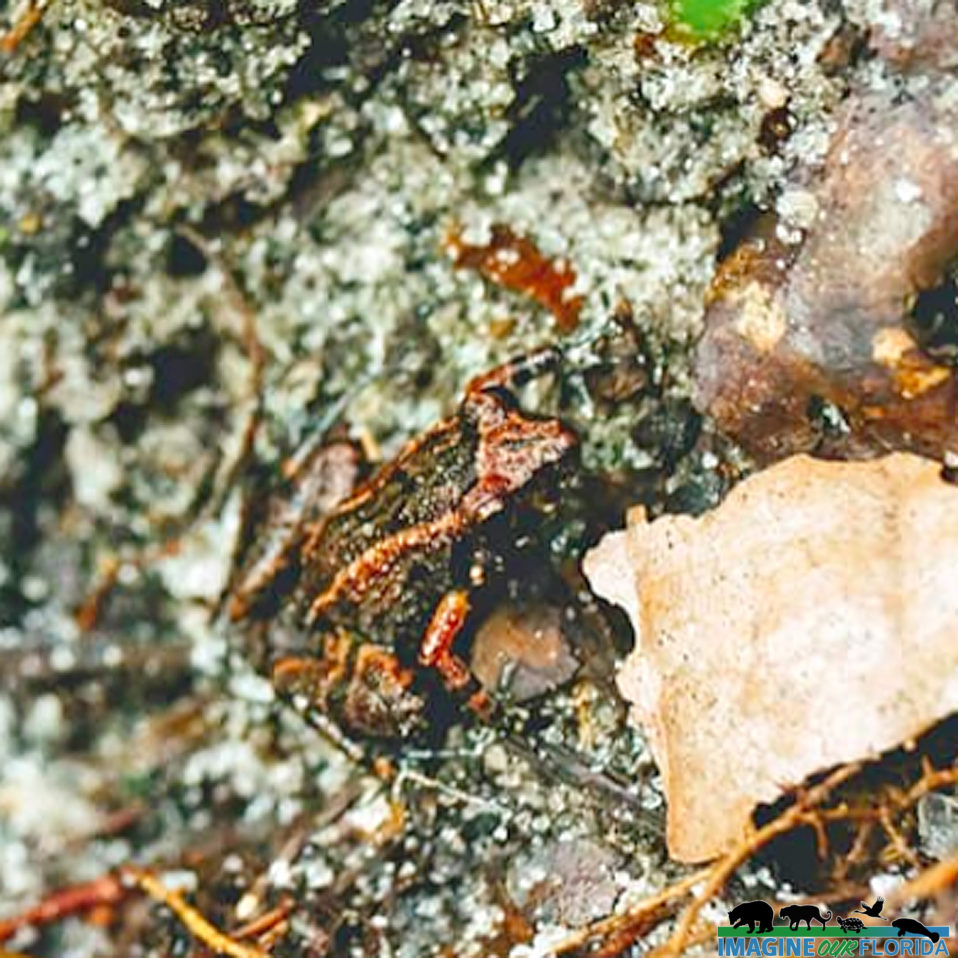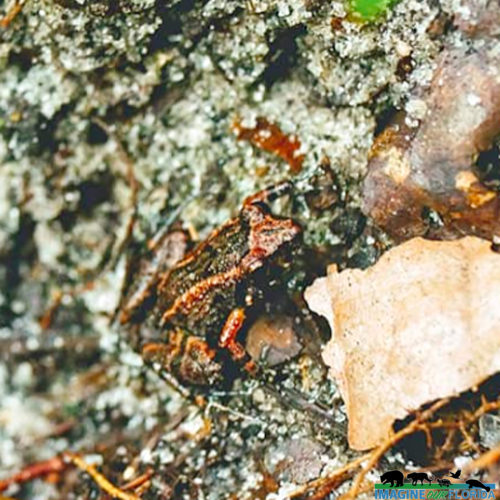Greenhouse Frog
Federal: Invasive (FWC date unknown)
Florida: Invasive (FWC date unknown)
Greenhouse frogs are 12-30mm long and have red, brown, or bronze-colored granular skin. There are two patterns: a dominant and a recessive pattern. The dominant pattern has two dorsolateral stripes from the eyes to the posterior end. The recessive pattern is a light tan with dark marks and a V-shape on the back and line connecting the eyes. The underbelly is white. The eyes are red with a brown stippling pattern. Fingers are thin, unwebbed, and have small toe pads. Female frogs have a larger snout-vent length (Cervino 2014).
They are native to Cuba, the Cayman Islands, the Bahamas, and other Caribbean islands (Cervino 2014; FWC date unknown). They are non-native throughout the United States. In Florida, they can be found throughout most of the state, and the range extends along the Gulf Coast to parts of east Texas (Somma 2023).
Greenhouse frogs prefer hot and humid environments. Areas with debris that collects moisture, such as hammocks, swamps, or other lowlands, are ideal locations. They also do well in developed areas that are well irrigated (Cervino 2014; FWC date unknown)
They are primarily insectivores eating beetles, roaches, ants, spiders, and other invertebrates. (Cervino 2014)
Breeding occurs during the rainy season of spring and summer. When conditions are humid, males take refuge under debris and emit a mating call to females. Clutches consist of about 20 eggs under damp debris. Once eggs are laid, no parental care is given (Cervino 2014).
They are terrestrial frogs and directly develop into frogs, skipping the tadpole stage. They are named due to their dispersal through the plant trade. Often found in potted plants, they would be transported with household plant shipments (Somma 2023).
References:
Cervino S. 2014. “Eleutherodactylus planirostris” (On-line), Animal Diversity Web [ Accessed 2023 April 11]: https://animaldiversity.org/…/Eleutherodactylus…/
[FWC] Florida Fish and Wildlife Conservation Commission. Date unknown. Greenhouse frog (Eleutherodactylus planirostris) [Accessed 2023 April 11]: https://myfwc.com/…/frogs-and-toads/greenhouse-frog/
Somma LA. 2023, Eleutherodactylus planirostris (Cope, 1862): U.S. Geological Survey, Nonindigenous Aquatic Species Database, Gainesville, FL. [Accessed 2023 April 11]: https://nas.er.usgs.gov/queries/factsheet.aspx?SpeciesID=61



Recent Comments